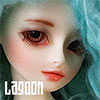FAQ, how to make, ect…
I keep getting asked the same questions about doll making and unfortunately I don’t have time to answer them, so i collected all the info i have here. If you have really specific questions(ei: My silicone isn’t setting up, why?) feel free to ask.
There is no magic bullet answer for making BJDs except to say “TRY.” Learned by doing. It’s the only way you’re going to improve.
Important! The biggest misconception people have is that making their own doll will be cheaper to get what they want. It’s not. It’s about the same price in total. Unless you’re really passionate about art and have a great track record for getting huge projects done, you’re probably better off just saving your money slowly and buying a company doll you really like. Making a doll is time consuming and requires engineering skills as well as art skills. Anyone can do it, but not instantly. It will take time, heart, and hard work no matter what level of artist you are.
1. How do I make a doll?
Noah’s doll tutorial
This is a really, really good place to start.
2. What do you sculpt your dolls in?
Depending on the doll I use paperclay, super sculpey, or apoxie sculpt. Pop those names into google and you will find a variety of places that sell them. Each clay has a different hardness, durability, work time, curing process, and weight. I suggest giving them each a chance to see which one you like. Paperclay dolls are weak and don’t take a lot of strain. Super Sculpey is strong but brittle and will break under compression over time. Apoxie sculpt is very hard, durable, but has a short work time of 1-2 hours and cures over night.
3. Where can I get silicone/resins from?
Smooth-on.com Alumilite.com Polytek.com bity.com these are all stateside companies. I have no idea what is/isn’t available in other countries. I suggest getting a kit from smooth on or alumilite to get you started. they all have tons of tutorials on mold making and casting. Again, each resin and silicone has it’s own properties.
4. Will you make a tutorial on this?
Here are the videos I’ve made on youtube
Here are the ones on Deviantart
In the past few months the requests have started to get more and more demanding and rude. I like to be helpful and provide information for people… but I don’t have to supply the information. I think the message that really sticks in my mind is someone who said they absolutely hate my dolls but they want me to teach them how to make dolls anyway. :/ I’m sorry. I’m not trying to keep the information from you… the information is already out there. You just have to spend some time researching. There are some great sculpting and casting books out there as well. Look for them.
Making a BJD means teaching yourself a variety of skills and then applying them to doll making.
5. How do I make a mold?
Dan Perez Workshop’s basics on molding in silicone.
Vivicore’s casting/building tutorial.
6. How do I make the doll hollow?
Build the limbs over straws. For the body, you can use either aluminum foil(and pull it out later) or make a 3d box out of chipboard. I have a video on that if you look at my youtube channel. it’s Making a BJD 01 i think.
7. Where can I get more information/help?
The Joint is a BJD-creation forum run by several accomplished artists. they’re all very helpful and wonderful. Join it.
8. Where do I get ball-joints from?
This is a tricky one. The easy answer is that anything spherical can generally be used as a joint. When I first started working on dolls I literally went to every single craft, toy and hardware store in town gathering as many spherical things as I could. The more perfect your sphere the better your joint will move.
The easiest thing to do is get wooden balls and beads and cut the holes into the slots used for joint movement(there’s a tutorial on the shape and how to make simple molds for more joints in my deviant art tutorials linked above). Ball bearings are also wonderful, but you’ll have to make molds of them and then press your material into the molds.
Pulkifee and I also have released 3d modeled spheres available for print on Shapeways.com You can find my store here, once i remember where her store is I’ll update with another link to it! These balls are pretty expensive, I know. I’m sorry. 3d printing is very expensive but a really useful tool.
9. Will you sell me/give me your junk casts?
No. I sell bits and bobs when I sell them. Please don’t ask me for them. When/if I DO have broken bits(which are usually NOT dolls or faces), I sell them on my etsy shop.
10. How do I get my doll cast by someone else? How do I set up for that?
I really suggest casting your doll yourself before going this route as it’s very expensive and if the original is not extremely sturdy it can be damaged in the molding process. However, you can talk to Grace at Jpopdolls.net for information on pro-casting.
11. How much do you pay for your individual pro-casts?
More than you think. The initial investment is large. If I sold off my entire stock in one go I would make a good profit, however I’ve never done that. I usually sell enough dolls that I can pay off the order without taking out a loan. Over the course of several years I will probably be able to sell off the remaining stock but there’s no guarantee. The doll market is very fickle.
I go with pro-casting not because it’s cheaper, but because it’s a more consistent, professional quality in a larger quantity than I can produce myself(I can only produce maybe 5 dolls a month on my own). I’m sure if I made doll making my only job(I am employed as a 3d modeler for video games) I could possibly produce the same quality and quantity. However, making my rent every month would become a crap shoot, I would no longer have health insurance, and I’d be pulling 16 hour days/6 day work weeks. For sake of sanity, i keep my day job which I thankfully generally enjoy.
*******
Good luck!
This stuff isn’t that hard, but it does require a lot of work on your part and a willingness to make mistakes and move past them.












do you use paperclay of apoxie sculpt. which one is better. i know you cast the dolls in resin but if you use paperclay is it weak of strong
I use both, but not together. I make the original from paper clay, then make a resin cast. Paperclay is durable, but delicate. It won’t stand up to a lot of handling and noodling. Once I make a resin junk cast, I have pieces that are much more durable. I can get the resin thinner without worrying about breakage and string it tighter to test mobility. I use apoxy sculpt at this point to refine the cast since it has a similar hardness to the resin I use for junk casts. Most of my junk casts are alumilite resin. It’s durable but soft and easy to sand. However it doesn’t have as good compression strength as Smooth-on’s task 9- which is what i am now casting my artist dolls from. The pro-cast dolls(the ones for general sale) are yet a different type of resin that is made by the casting company I use.
Where do you buy your wigs/hair for the BJDs? Its super gorgeous!
A variety of places. :3 The fluffy mohair ones are made by me, but a lot of them come from jpopdolls.net there’s a lot of places to wigs on-line!
Hi my name is Erika, I had a quick question, I am making a double joingted doll out of porcelain. When it is done in the kiln do you have any reconmomdations about how I should ‘blush’ the doll so-to-speak?
Blushing is just inhancing the natural color of the doll with watery acrylic paints. Which is fine for oven baked clays. But I do not know how to go about it with porcelain…I don’t want to glaze the entire piece to make it look glossy. I just want a realistic look…
If you don’t know thats fine :) It’s seams like not to many people are framiliar with porcelain haha I love what you do so much! That’s for the youtube videos! <3
I’m really not sure at all… My experience with porcelain is limited to pinch pots in High School. XD I blush my dolls with pastel dust or an airbrush. I know that some people do airbrush glazes onto porcelain horses with an airbrush, so you might ask people in the model horse hobbies or people who paint ceramic doll heads. I know my grandmother used to paint ceramics with oil paints then fire them to make the color permanent but again, that’s been many,many years since I’ve done that with her. You might ask Lyn Raftis for advice, she used to do a lot of ceramics painting. http://www.raftis.net/~lyn/Esthetics_by_Lyn/faceup_info.html her email address is at the bottom of the page. good luck!
I just wanted to let you know how grateful I am for the information that you share. I am new to bjd and especially love your creations, Delta and Gamma are my favorites. I hope to be able to afford one soon, ( hope you don’t run out of those two). I plan on making one of those my very first bjd.
thank you! :D I’m glad I can be helpful. Let me know if you have any questions~
Hi, if I were going to only make one doll could I just seal the paperclay with a sealant or would it be better just to cast the doll? Thank you.
It depends on how much you plan to play with the doll. Paperclay is very delicate when dry, but if you keep it loosely strung with beading elastic it should be okay to sit around and look pretty. If you just want to make one doll without casting I recommend doing it out of polymer clay or apoxie sculpt. They’re much more durable materials. You’ll still need to string them with a gentle hand. They don’t need to be super floppy, but polymer clay and apoxie sculpt don’t have as good compression strength and can crack over time if it’s strung too tight. :3 I cast because i love having the ability to and i like the superior durability. But you don’t have to cast if you don’t want to.
I’m sorry for bothering you but is it possible to spray paint dolls you have made out of super sculpty? Also, Your dolls are amazingly beautiful!
It should be fine, but you’ll want to do several light coats. Start with wiping the baked doll down with some acetone. Super Sculpey has a sort of film on it after baking that makes it hard for paint to adhere to the surface. The paint might scrape off on the contact points, like the joints.
With polymer clay you only want to use acrylic paint. Spray paint will eat into it.
I’ve never had any problems using spray primer on baked polymer clay. I’ve got dolls that i made ten years ago and have coated in primer and they’re still smooth and good to cast! Generally I use Rustolium or Krylon sandable primers or primers intended for use on model kit figures, like Army or Tamiya brands. As for using regular non-primer spray paint on polymer clay dolls that you aren’t intending to cast, I have never done that. I painted my ooak polymer dolls with acrylic paints for the most part, however I don’t find that polymer clay dolls have the durability i get from resin so I stopped making them. But if you’re intending to cast, primer is worth your time and effort. You will get a much nicer finished and have more professional looking results if you do a couple rounds of sanding and priming. It reduces the small imperfections and scratches.
What do you use for the eyes? Thanks!
I use eyes for the eyes. XD If you pop “doll eyes” into google you should get a lot of hits of where to purchase different types of eyes. I use glass eyes I buy from my supplier. :3
Based off your tutorials, I am thinking about making a faceplate for my dolls, would that be alright?
Do it! :D <3
How would one make expression faceplates? Do you mind the original fave or sculpt a new one and try to get it to look perfect?
That would be a question that Armeleia could answer better than I can. I’ve never made expression faceplates. You can get a hold of her on the Joint or on tumblr. <3
Okay thank you very much, I’ll be sure to contact her. I apologize for the auto correct. I just noticed one sentence made no sense.
Thanks so much! *looks up eyes and gives hugs.*
Hi!
I stumbled upon you site through a friend linking to
your mini machinas. (So cute!) I have been thinking about making
my own doll for a long time but more seriously the last year, i have yet to go through all links, videos and so on but i want to thank you so much for sharing you info and insight, it is rare and i appreciate that you have given so much of your time to try and help us that are just starting out! Many, many thanks! <3
glad i can be of help! good luck!
Ahhh nooo your link to Noah’s tutorial is broken! (And Google’s all like “lol Noah’s ark right?” )
As a side note, your work is gorgeous *o* I just discovered you today and I am in love~!
fixed it! thanks! :D
http://www2d.biglobe.ne.jp/~dhnoah/make_00.htm
Hello miss Batchix! I know you probably get this alot but which pro-casters do you recomend? I’ve heard of people using bobobie I think & Dollshe and you mentioned Jpop dolls. It seems bobobie & Jpop have a wide variety of colors (which is what I’m looking for). I’m also going to try my hand at casting myself first! Thank you for all the info you share & for making such awesome dolls!
I go through Weiju, which jpop set me up with. :3 They’re really nice!
Thank you so much for all the information on your site! I’ve been so enjoying going through it and learning as all the doll classes in my area take place while I’m at work. Your willingness to share your expertise with others is generous and much appreciated!
Hello Miss, I had a quick question I was hoping you could help me out with: When you cast a paperclay doll in resin, do you have to coat it in something? It seems like it might stick.
Your dolls are absolutely gorgeous by the by, and it’s so nice to see a big fancy doll maker like yourself actually responding to people! c;
Eh, I’m not big and fancy, but thanks! XD
You’ll want to seal the paperclay with some kind of sandable primer. I like to use Krylon or Rustolium. You can use any color you want(I have gray and black, but it also comes in brown). After each coat, let it dry for a few hours, then sand up to a 400-600 grit. If any paper clay shows through, prime it again. When you get to the point that you’re not seeing any paperclay showing through the primer, sand your part up to about 1500 grit. That’ll give you a super smooth, awesome feeling surface to your cast!
Alternatively you can seal it by coating it in a few layers of acrylic gloss- but you can’t really sand that and it gives you a messy cast… but if you’re in a big hurry or absolutely can’t find any kind of primer, it’ll work.
But yes, always seal paperclay with something, especially for casting. It will absorb the silicone and will ruin both mold and original.
So, I’ve been working on a super-tiny doll in paperclay. The eyes are proving the hardest part — not the sculpting, but making sure they are hollowed and sealed, and sanded nicely. I had originally done it be setting beads into the head while sculpting it, and that worked well, but with the sealant I’m worried that the eyewells have shrunk a bit. Have you any suggestions?
Did you brush on the sealant or was it a spray on? If it’s a super tiny doll, and especially if it was a brush on sealant, then yes, the eye wells probably shrunk a little bit. You could try gently using an eyebeveler or a little sand paper to sand it down, but I’m not sure what to do. the safest thing to do is to find smaller eyes, depending on how tiny the eye wells are.
I am both saddened and sickened by what I read, the I don’t like your dolls, and give me your parts thing! Please don’t hold that against the normals lol. Your work is just amazing! My question is, are there dolls that are sculpted in clay that you don’t have to cast, can I sculpt a doll out of polymer clay and that doll be my bjd, or does the rest of the process HAVE to be completed? I hope that makes sense. Thank you again you’re an angel for sharing!
You can just sculpt it out with polymer clay and not go on to casting, but polymer clay isn’t as strong so your doll may be prone to breakage. If you want a direct sculpt doll I’d recommend Apoxy Sculpt white and tinting it the color you want instead, it’s a more durable material. :3
thanks for the kind words! <3
I just wanted to leave a little note of appreciation for you here! I’ve been reading your tips and watching your youtube videos for two years now, and without all the time a dedication you put into teaching I wouldn’t have learned even half of what I know now.
It was in fact my little sister showing me your sculpting tutorial (she’s a huge transformers fan and consequently loves your machina dolls) that really got me interested in the mechanics of bjd making in the first place.
It’s my dream to someday have my own line of fantasy themed ball jointed dolls, and it’s heartwarming to know that a one person army can make that happen. I’m determined to learn how to resin cast my paperclay creations this year and, again, I appreciate the wealth of information you’ve collected on the subject. Keep doing what you do and being amazing!
glad it could help you out! <3
Hi Batchix!
I’d like to cast myself my bjd dolls but I don’t undestand how resin I have to use.I’d like to know the name so I can buy it on the web.May you help me please??
Thank you for your precious help and tricks!!
I’d recommend smoothon.com’s “Smooth Cast 300″ for a first resin. Other resin brands that are good are Polytek, Tap, or Alumilite. Does that help?
In Italy I don’t found this brand :/ but I hope to found it on the web! Thanks a lot !!
ask Twigling about european resin sources, she lives in spain. :3
Firstly, I love your dolls; they are absolutely gorgeous and I’m saving up for one :D Can’t wait!
Anyways, I have a question:
What method do you use to put on your dolls’ hair? Do you use the wig method or is there a more permanent way of doing this?
Rather, what would you recommend and how?
Thank you! :D
I recommend getting wigs for your dolls. Because of the way bjds are strung, you’ll need to get inside their head at some point. Either to change their eyes or change the strings inside their body. There’s a lot of really great wigs out there that are designed for dolls and designed to be swapped between. I recommend jpopdolls.com for wigs. I really like how soft they are. The girls wear a 5 inch wig. If you want something similar to the fur wig styles they wear in my photos sometimes I’d recommend funnylori‘s wigs. She makes great wigs and has a lot of the same colors i do.
Thank you for the advice!
I’ll be sure to check out the site. :)
I’m thinking of making 4 ball jointed dolls, the only thing is I never made one before. I’m worried about the cost of making them though, do you know much would it roughly cost to make them in paperclay? I have a very limited income (aka how much I can get from my dad without him saying give up you’re costing too much). And any other tips would be helpful and appreciated! Btw I’ve only been working with clay for a year so I’m pretty inexperienced:-/
You can actually make your own paperclay. If you go that route I recommend this woman’s instructions: http://www.ultimatepapermache.com/paper-mache-clay I would invest in a single package of the premier paperclay from a store and see how you like it first before you do anything. A single package is about $8. Make sure you keep it in a plastic ziplock after opening and spritz it with a little water. Paperclay feels different than other sorts of clays so you’ll have to get used to it’s limitations and strengths.
Depending on the size of your dolls is going to depend on the amount of clay you need. I usually use about 4 packages for a small doll, mostly because I make a lot of changes as I go along. You’re also going to want some straws to make the bodies hollow, sand paper for the clean up, an exacto blade, a rasp for removing large amounts of dry paperclay(don’t file it when it’s wet or your rasp will rust!) and wooden balls to make the joints. You could build up the rough body of the doll with homemade paperclay and then cover the body in a skin of the finer stuff to carve your detail into the doll. Making dolls can be expensive, especially if you decide to cast the doll in resin. Try making one doll and see how you like it before you invest in enough material to make all four. :3 hope that helps a bit!
Thank you so much! I can’t wait to get started! And I have one more question, is it possible to make a BJD out of Sculpy/oven bake clay? Cuz all I see is paperclay dolls and I’m more used to Sculpy .
Where did you get the wig used in your Dark Elf pics? Looks awesome :D
Sorry for the late reply! I missed this comment! I got his wig from SpritelyThings on etsy. It’s alpaca fiber and super super nice!
Hi, I’m just wondering if you had a particular suggestion for which specific resin/silicone to use for molding and casting?
I’ve been going through Allumite and Smooth-On, but there are so many choices and I have no idea what I should be looking for in terms of hardness or flexibility or what any of their numbered terms mean, and whenever I try to look up what type of resin is a good choice for BJDs, Google takes me to a bunch of recasting sites…
Please help!
For your first time I suggest Oomoo silicone from smooth on. It’s easy to use and mix and low viscosity(which means it creates less bubbles on your cast without pressure casting). It may LOOk more expensive, but it’s actually cheaper because it’s a 1:1 mix ratio… so a 1 gallon kit is a gallon of each part. So in the end… two gallons of silicone. After you’ve gotten used to making molds, I’d suggest switching to Mold Max 30. It’s a good hardness/flexibility but it’s thicker and a longer set… so you have more potential for bubbles unless you pressure cast. But the Mold Max molds last longer and don’t warp over time.
For resin, I’d use smooth cast 300 or Alumilite’s regular resin. Smooth Cast comes in different set times, but it’s really up to you which of those you choose. Be sure and get the “dry gas blanket” spray as well and spray that into your resin bottles after pouring, that will keep them from absorbing moisture from the air.
Thank you so much!
Question though–does Alumilite dye work with Smooth Cast resin?
Can’t wait to try it out!
Never mind that last question actually.
Again, thank you so much–I really appreciate your advice. :)
Hello! Thank you so much for all the info, it’s fantastic!
I’ve started recently making my first bjd, and I was interested in casting it in resin at some point. However I’m kinda lost at the materials part. I don’t understand how does the silicone weight translate to volume! Would 1lbs of silicone be enough to do a full mold of a smallish bjd? (around 25cm tall) Or should I get more? @_@ Again, thank you so much! Have a nice day!
The best way to measure stuff like that is by pint or gallon. It took me about half a gallon to do Clever Little’s molds and he’s a very thin 25cm doll. I would get at least a gallon for doing the doll. If you’ve never done any kind of pouring before, I would get a sample of the silicon you intend to use. I think Smooth On’s smallest sample is a pint? It’s enough that you can get a feel for what you’re doing and if you end up not liking that type of silicone or not liking casting at all you’ve not invested quite so much money into it. I think Alumilite has a complete set for getting started casting as well.
Thanks a lot for the reply! (and so fast!) I might look for equivalent products in my country, since overseas shipping can be expensive. Taking that into account, the packs I had been eyeing are definitely too small u.u I guess I’ll get the smallest one as a test then =3= Thanks again!
Hi, this FAQ is absolutely fascinating, and cleared up a bunch of questions I had! Thank you for being so generous with your knowledge =)
One thing I’m stuck on however is the different kinds of resins – very opaque ones vs very translucent ones. What’s going on there? What brands do translucent resins?
Most urethane resins are opaque. Some have a little bit of translucency like candle wax, but still are mostly opaque. There are also completely clear urethane resins- but they are typically very, very dangerous. If you get anything that says “water clear” and is a urethane resin, be extremely careful. You can easily get a chemical burn.
But there’s also clear polyester resins, like Castin’ Crafts, which smells awful but is totally safe. Polyester resin and urethane resins are different. You can cast things like eyes, crystals, gems, waterfalls, ect from clear resin as well as adding different things to make translucent casts as well. It’s fun stuff! Task 9, which is what I use, is a clear urethane that is safe for home casting. It has a brownish cast when not tinted, so it isn’t perfect. There’s also Ice Resin, which is very safe but takes a really long time for it to reach full hardness.
Does that help at all or is that even more confusing?
My goodness that was fast!
There’s a lot more variety than I thought, which is exciting! I think the resin I’m trying to match is one of the candle wax like resins – is task 9 like that?
Also, thank you for the warning about the clear resins.
I am so glad I found this page. I have two questions. So I am wanting to make my own dolls to sell and ( I have been doing research but some of the answers I am looking for are hard to find) I was wanting for them to be quite durable as I was hoping to sell them to younger folk, so I was wondering if there are materials that would be best for this? Also I was wondering if there was a way I didn’t have to make too many ‘molds’ and I could use one over and over again to make a ‘cast’ for the permanent doll that I plan on painting to sell? I apologize for the long questions and sorry if they don’t make much sense but any information you can give will be greatly appreciated. Thank you.
Sorry I missed this message! If you’re wanting to make dolls that could withstand the play of children, I’m not sure what the best thing to use would be. Resin is much more durable than porcelain(mostly because it has a little “give” so it doesn’t snap so easily), but it’s still delicate and I’d hesitate to give it to a child as a regular play doll. I had porcelain dolls as a kid that I’d play with, but only under supervision. Most playscale dolls are ABS plastic or vinyl- but that’s hard to get molds for and the molds are more expensive from what i understand. Some resins are harder and more durable than others too. The Task 9 I use is extremely durable but i think smooth on makes some more durable ones intended for industrial use that are still safe to cast and handle.
You need to make one mold for each part you cast, so to use less molds you’d need to make the doll less segmented. That would also make it a little more durable. Such as you could have the hands forearms as one whole part, or calf and foot as one part. It’s a LITTLE harder to string that way, but honestly not that bad. If you mean less parts to the mold, you can do split molds. I think smoothon.com has some good instructions on how to do alternative molds.
Thank you for your response! I will surely look more into smoothon.com. But another question kind of related to my previous one, I took a quick glance at the sculpture and art casting section and it looks like most of their videos are for like figures that don’t have multiple parts such as a ball jointed doll. I have pictures of molds people have made out of silicone, they have ‘pegs’ so you connect both sides and pour your resin mixture in their and it makes a whole doll part. I have seen the pictures but I don’t fully understand how they make these molds and how once they have fully casted every doll piece, how they string it together? I apologize for such the specific questions but I really want to know so I can know what all to start buying and what to study before I start this. I am an artist and I love doing crafts. I really do love your dolls by the way and I hope this information isn’t too much to ask for. I am just really excited to start doing this. Thanks again for answering me before! I will take it all into consideration, and do more research!
Did you look at Vivicore’s tutorial? It’s very short, but it does explain a little better why you use keys, which are the pegged parts that help the mold stick together. Are you on the Joint forum? It’s a good place to get answers like this. As for stringing, look up “stringing tutorial” on youtube. There’s a lot of videos people have made about how to string a finished doll.
Thank you! That was very informative. I appreciate your help.
Just a question, are you still making dolls? And hi from 2016 :)
Yup! I still make dolls.
Thank you for this! I’m midway into sculpting my first doll, and have realized I want to be continue on from just sculpting. I found other info articles, but none as comprehensive and encouraging as your’s-all the links are so useful, and they’re helping me keep in mind the various needs for mold making while I’m sculpting.
I’m so excited to have found this. It’s been uplifting to read that I came to similar processes as you have. Next is learning all about resins, but being Australian means I need to actually put in the ground work and find out the right kind that I can source locally. Anyway, I wanted to say thank you for this, I have been a fan for a long time, but never thought to check any FAQs. You’re so sweet to share all this information. It’s just amazing to see.
Hello! I was curious to see if there’s any way that I can sculpt my doll out of paper clay, and then once it’s dry go over it with apoxy (the putty); is that possible? Or will I have to seal it beforehand to go along that route? Or is it just a bad idea all together?XD
I don’t know if that would stick or not! It would be good for doing a core in paper clay and then a thin skin of a apoxie sculpt. Not too thin tho or it might break. I’d definitely experiment before you did it to your finished work. :3
Alrighty thank you very much!!x3
I’ve made a doll using La doll Premier clay and cast it into resin before. Now I’m making a new body, but this time I want to make the mold using a pressure tank. My concern is that the clay, which seems like a paper clay though it is strong, might break under pressure in the tank. tank. If you have experience with this I’d like your advice as to whether or not I can use this type of clay in pressure molding.
So long as the paperclay has been primed or painted in some way so the silicone doesn’t leach into it, it should be fine. I haven’t had any of my parts get crushed or break from the pressure itself- but I have had them break coming out of the mold. Still, there’s a first time for everything. You might want to test it if you have a part you’re unsure of.